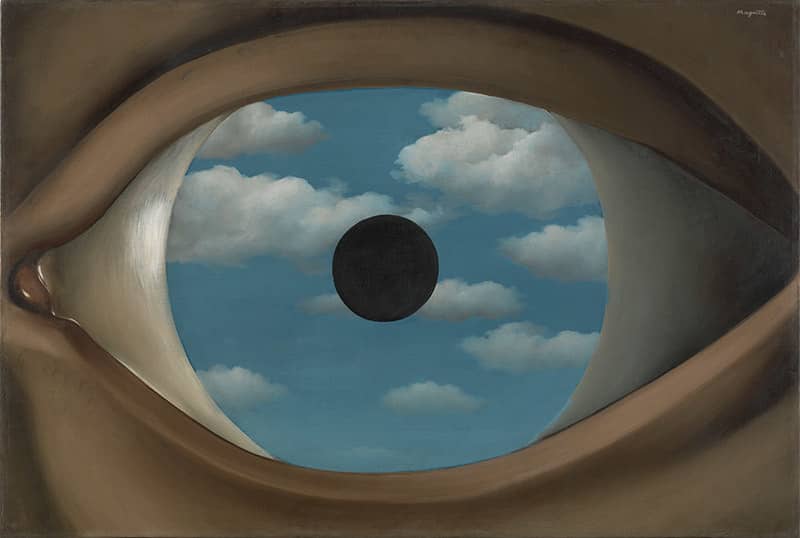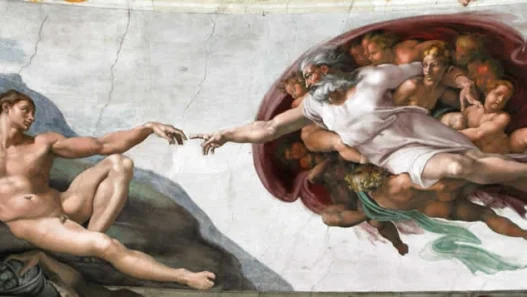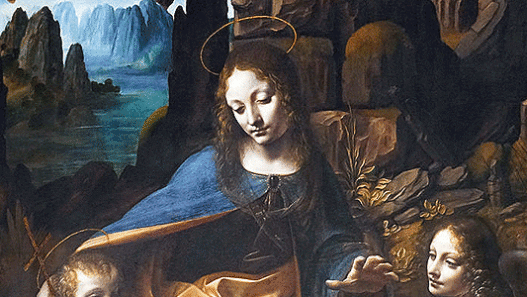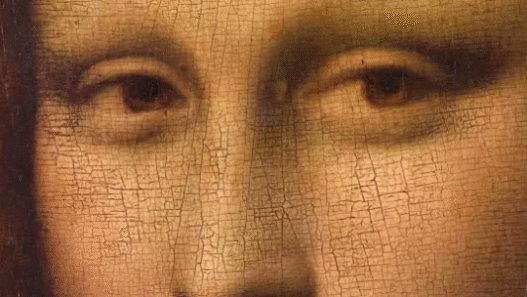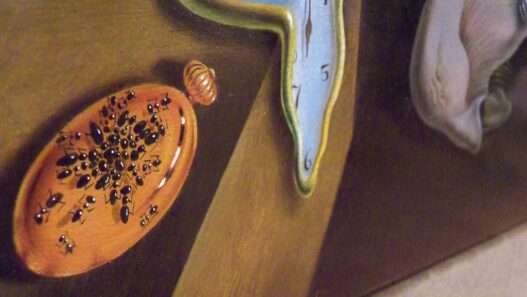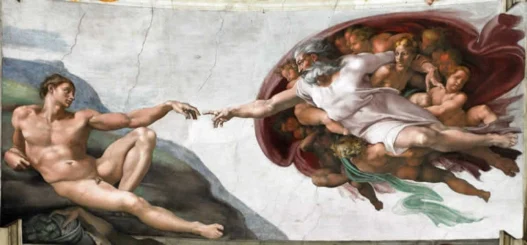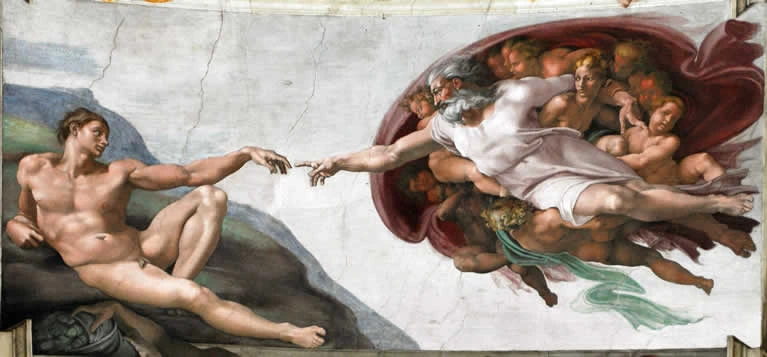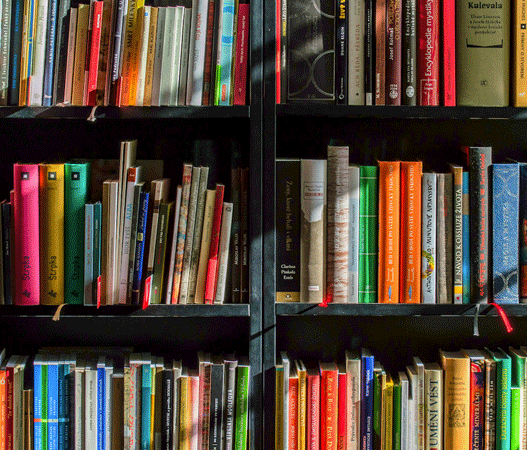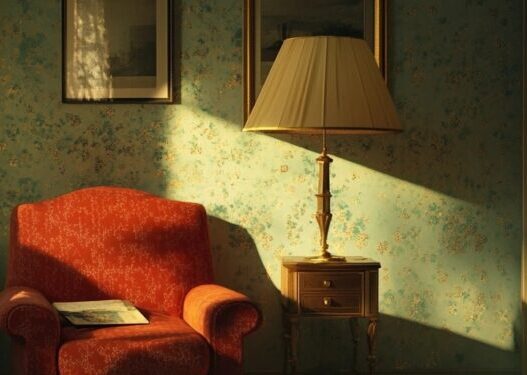When you gaze at Michelangelo’s Creation of Adam, you’re witnessing one of the most profound visual meditations on life, divinity, and the human spirit ever created. The moment Michelangelo captures, God reaching out to touch Adam’s hand, symbolises the divine spark that awakens human consciousness.
The near-touching fingers have become one of the most enduring images in art history, representing the connection between God and humankind, the birth of intellect, and the transfer of spiritual vitality.
Note: The person who asks visitors to remain silent in the Sistine Chapel is not named, it’s one of the Chapel attendants (custodians) employed by the Vatican Museums. They regularly call out “Silenzio!” to maintain quiet and preserve reverence in the sacred space.
Symbolism
The space between their hands speaks to the tension between divine perfection and human potential, the eternal reach toward enlightenment.
God’s flowing cloak, surrounding angels, has been interpreted by some scholars as resembling a human brain, symbolising divine intelligence.
Adam’s relaxed posture conveys humanity’s passive dependence on divine grace, a reflection of Renaissance humanism’s balance between faith and reason.
The Creation of Adam: Neurology and Neoplatonism
Symbolism straight to your inbox
Michelangelo’s Symbolic Journey
When Michelangelo was commissioned by Pope Julius II to paint the ceiling of the Sistine Chapel, he wasn’t exactly thrilled, in fact, he resisted. He considered himself a sculptor, not a painter, and had little experience with fresco, the demanding technique of painting on wet plaster. Yet, under the Pope’s insistence, he accepted the challenge.
Here’s a poignant quote from Michelangelo Buonarroti that reflects his reluctance to paint the ceiling of the Sistine Chapel:
“I am not in the right place — I am not a painter.”
This sentiment underscores Michelangelo’s self-identification as a sculptor rather than a painter, highlighting his initial resistance to the commission. The full text of this letter, along with other writings by Michelangelo, can be found in the book The Complete Poems of Michelangelo, which I wholehearted recommend.
For a more in-depth exploration of this topic, you might find the following article insightful:
➤ Michelangelo’s despairing poem about painting the Sistine Chapel
